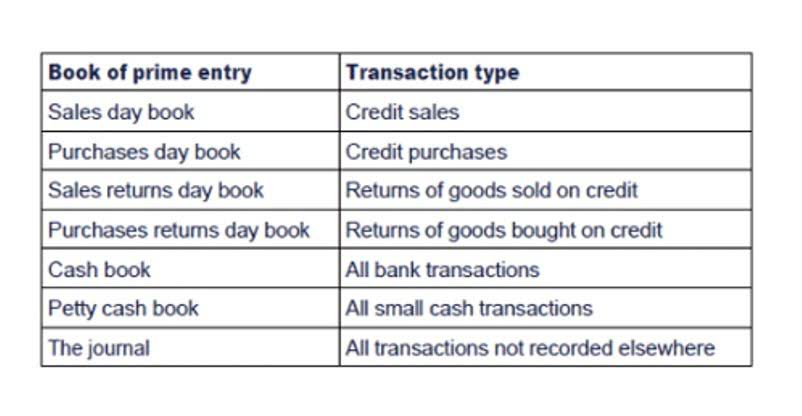
This makes sense as the company’s total stockholders’ equity is the cumulative amount of paid-in capital and retained earnings. The equity Formula states that the total value of the company’s equity is equal to the sum of the total assets minus the total liabilities. As such, many investors view companies with negative equity as risky or unsafe. However, many individuals use it in conjunction with other financial metrics to gauge the soundness of a company. When it is used with other tools, an investor can accurately analyze the health of an organization.

What is Tangible Common Equity?
- Total equity represents the residual interest in the assets of a company after deducting liabilities.
- Any business owner who is serious about growing their business needs to understand equity.
- Because Anne’s mom’s stock is preferred stock, she gets first dibs on the dividend.
- Business growth can have a positive impact on equity as it often leads to increased revenues, profits, and asset values.
Companies can reissue treasury shares back to stockholders when companies need to raise money. Equity is used as capital raised by a company, which is then used to purchase assets, invest in projects, and fund operations. A firm typically can raise capital by issuing debt (in the form of a loan or via bonds) or equity (by selling stock).
Common Misunderstandings about the Equity Equation
By composition, total equity consists of all shares of stock issued (paid-in capital), plus additional paid-in capital, reserves and retained earnings, minus any own stock repurchases (treasury stock). Shareholder equity can also be expressed as a company’s share capital and retained earnings less the value of treasury shares. Though both methods yield the exact figure, the use of total assets and total liabilities is more illustrative of a company’s financial health. To calculate equity on a balance sheet, the first step is to identify and quantify the company’s total assets.

Why Equity is Important in a Business
- Long-term assets are those that can’t be converted to cash or consumed within a year, such as real estate properties, manufacturing plants, equipment, and intangible items, including patents.
- Equity represents the ownership interest in a company and is calculated by subtracting total liabilities from total assets.
- A balance sheet is a financial statement that provides a snapshot of a company’s financial position at a specific point in time.
- As per the balance sheet of ABC Limited for the financial year ended on March 31, 20XX, the total assets are $750,000, and the total liabilities are $450,000.
- The shareholder’s equity is dependent on the total equity of the company.
This makes TCE a more conservative and reliable metric, particularly when evaluating a company’s resilience in times of financial stress. Equity represents the ownership interest in a company and is calculated by subtracting total liabilities from total assets. It reflects the value that shareholders hold in the company and is often a measure of its net worth. Equity can increase or decrease depending on various factors, including the company’s profitability and the issuance of new shares. The stockholders’ equity, also known as shareholders’ equity, represents the residual amount that the business owners would receive after all the assets are liquidated and all the debts are paid. Shareholder equity is also known as the book value of the company and is derived from two main sources, the money invested in the business and the retained earnings.
How do you calculate stockholders’ equity?
If you total up the value of all the shares you own, that’s your total stock in the company. In this case, it’s just the value of all your assets (cash, equipment, etc.) minus all your liabilities . One common misconception about stockholders’ equity is that it reflects cash resources available to the company. If the above situation occurs, stockholders’ equity would be negative and it would be difficult for the company to raise more capital. Negative equity can also occur when there is not enough money realized from sales to cover the company’s debt obligations.

- Cash flows or the assets of the company being acquired usually secure the loan.
- Privately held companies can then seek investors by selling off shares directly in private placements.
- Total Equity is an important element in various financial ratios, giving insight into a company’s financial health and performance.
- Negative equity is often a sign of financial distress and can indicate the company’s inability to meet its financial obligations.
- Conceptually, stockholders’ equity is useful as a means of judging the funds retained within a business.
- By analyzing the balance sheet, stakeholders can gain insights into the company’s ability to meet its financial obligations and assess its overall financial health.
It is important for investors to understand the different types of equity and their rights and privileges. Equity refers to the residual interest in the assets of a company after deducting its liabilities. It represents the ownership claim on the company’s assets and can be considered as the value that the owners or shareholders have invested in the business. Equity plays a crucial role in determining the financial stability and value of a company. To compute total liabilities for this equity formula, add Bookkeeping for Veterinarians the current liabilities such as accounts payable and short-term debts and long-term liabilities such as bonds payable and notes.
Mezzanine debt is a private loan, usually provided by a commercial bank or a mezzanine venture capital firm. Mezzanine transactions often involve a mix of debt and equity in a subordinated loan or warrants, common stock, total equity formula or preferred stock. Treasury shares or stock (not to be confused with U.S. Treasury bills) represent stock that the company has bought back from existing shareholders. Companies may do a repurchase when management cannot deploy all of the available equity capital in ways that might deliver the best returns. Shares bought back by companies become treasury shares, and the dollar value is noted in an account called treasury stock, a contra account to the accounts of investor capital and retained earnings.

The retained earnings are used primarily for the expenses of doing business and for the expansion of the business. All the information needed to compute a company’s shareholder equity is available on its balance sheet. If the company ever needs to be liquidated, SE is the amount of money that would be returned to these owners after all other debts are satisfied. Retained earnings are part of shareholder equity as is any capital invested in the company. Looking at the same period one year earlier, we can see that the year-over-year (YOY) change in equity was an increase of $9.5 billion. The balance income statement sheet shows this increase is due to a decrease in liabilities larger than the decrease in assets.
- Equity, also referred to as stockholders’ or shareholders’ equity, is the corporation’s owners’ residual claim on assets after debts have been paid.
- Long-term assets are possessions that cannot reliably be converted to cash or consumed within a year.
- The simplest and quickest method of calculating stockholders’ equity is by using the basic accounting equation.
- When your company incorporates, it has to call a board meeting to decide how many shares each of the company’s original owners will get.
- Equity is used as capital raised by a company, which is then used to purchase assets, invest in projects, and fund operations.
- When the balance sheet is not available, the shareholder’s equity can be calculated by summarizing the total amount of all assets and subtracting the total amount of all liabilities.
- For sole traders and partnerships, the corresponding concepts are the owner’s equity and partners’ equity.
Investors usually seek out equity investments as it provides a greater opportunity to share in the profits and growth of a firm. The equity of a company is the net difference between a company’s total assets and its total liabilities. A company’s equity, which is also referred to as shareholders’ equity, is used in fundamental analysis to determine its net worth.